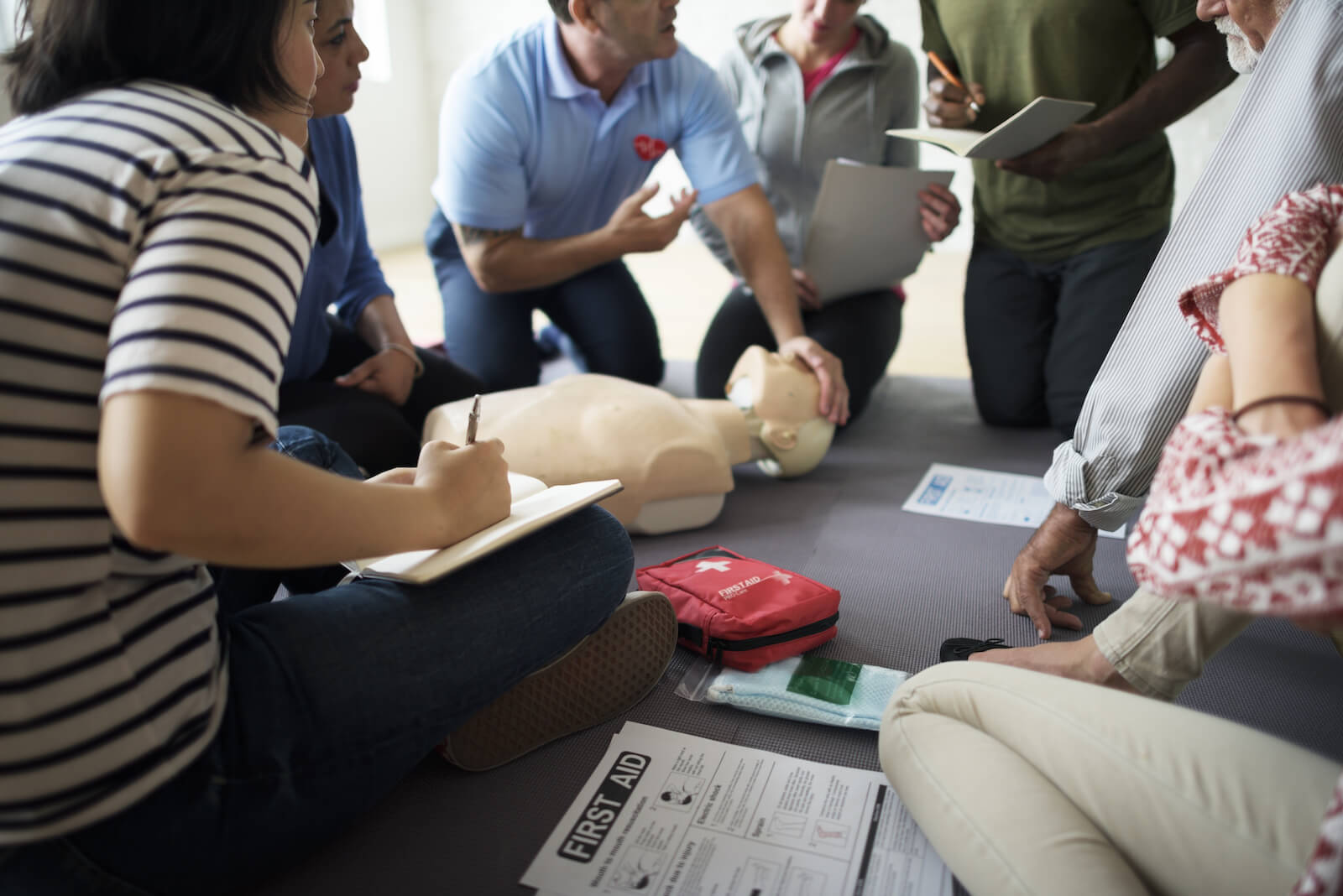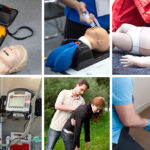If you found yourself in a cardiac arrest emergency, would you know whether to perform CPR or not? Would you recognize the signs of cardiac arrest and have confidence to save a life?
Contrary to what you might think, identifying cardiac arrest isn’t always easy. You might mistake a heart attack for cardiac arrest or worry about whether you can detect a pulse before beginning CPR, both of which can be potentially damaging. In the event of cardiac arrest, every second counts.
This article discusses when you should perform CPR on cardiac arrest victims. It also discusses the various signs victims exhibit during cardiac arrest and some measures to save their life.
American CPR Care Association is here for all of your CPR certification needs. We give you the tools you need to feel confident responding to cardiac arrest emergencies. Never doubt your abilities again. Continue reading to learn about when to perform CPR.
What Is CPR?
CPR stands for cardiopulmonary resuscitation- a lifesaving technique used to revive a patient in cardiac arrest. CPR involves chest compressions and rescue breaths. However, many organizations recommend “hands-only” CPR for those bystanders not certified in CPR. “Hands-only” CPR is CPR that only utilizes the chest compression portion of CPR. It can be can be just as effective as traditional CPR.
Why Is CPR Important?
CPR is important because 475,000 people die from cardiac arrest every year and CPR performed within minutes of cardiac arrest can double or triple victims’ survival.
What Happens During CPR?
CPR contains three components: chest compressions, checking the airway, and performing rescue breaths. CPR should be performed in these steps. Chest compressions circulate oxygen throughout the body by continuing to circulate blood. Rescue breaths accomplish the same aim by supplying oxygen to the brain. The combination of chest compressions and rescue breaths can buy the victim time until a bystander provides an AED shock or the paramedics arrive.
Heart Attack Vs. Cardiac Arrest
Heart attacks and cardiac arrest emergencies are different from each other and require different medical responses. Heart attacks occur when the blood flow through one of the arteries becomes blocked. In this case, the longer an artery remains blocked, the more heart muscle deteriorates. For early detection, be mindful of the following symptoms.
- Chest discomfort
- Abnormal discomfort in upper body areas such as one or both arms, the jaw, neck, or upper stomach.
- Shortness of breath
- Cold sweat
- Nausea
- Dizziness or lightheadedness
It’s important to remember that not everyone experiences the same heart attack symptoms. If you notice any of these symptoms, you should call 911 immediately.
Reasons To Perform CPR
It may seem challenging to analyze who does and doesn’t need CPR. It’s understandable- emergencies are fraught and adrenaline can cloud your judgment. However, the more you sharpen your CPR skills, the more confident you become in your ability to discern which situations require CPR.
That’s why the American CPR Care Association provides CPR certification courses for all ages. We believe that CPR should be accessible for everyone. People should never second guess themselves in a cardiac emergency. The following reasons provide an overview of when to perform CPR.
The Patient Isn’t Breathing
If the patient is breathing, CPR can circulate blood throughout the body. If the patient isn’t breathing, the heart can stop, and without the heart beating, organ damage and brain death can occur within minutes. The average person can only go without oxygen for six minutes before irreversible damage occurs. The quicker you start CPR, the more likely you can protect the patient’s organs from damage.
The Patient Is Taking Gasping Breaths
Patients can continue breathing for a few minutes after cardiac arrest occurs. However, you will notice their breathing becomes labored and sporadic. If you notice the patient struggling for air, you should immediately begin CPR.
The Patient’s Heart Isn’t Beating
When you respond to a cardiac arrest emergency, you should check for a pulse. If one isn’t detectable, you should tell someone to call 911 and begin CPR. Chest compressions can help circulate the blood throughout the body until first responders arrive.
The Patient Is Unconscious/Unresponsive
If a patient is unresponsive or unconscious, begin CPR immediately. Their condition can quickly destabilize and cause them to stop breathing.
Can You Damage Someone’s Heart If You Perform CPR While It Is Beating?
You might have heard the saying, “never perform CPR on a beating heart.” While you shouldn’t perform CPR on a heart attack victim, this saying isn’t necessarily true. The chances a bystander causes cardiac harm to a person by performing chest compressions are minimal. Quite simply, it is better to perform unnecessary CPR on a beating heart than to not perform CPR on someone in cardiac arrest.
When Shouldn’t You Perform CPR?
While it’s always better to be safe than sorry with CPR, there are a few scenarios when you should stop performing CPR.
Signs of Life
If you notice obvious signs of life, you should discontinue CPR. Signals such as the patient opening their eyes, moving, speaking to you, or evident breathing are all indications you should stop performing CPR.
In the event the patient revives but slips back into unconsciousness, you should resume CPR.
Fatigue
The will to save a life can be overwhelming. However, if you experience fatigue, you likely won’t perform the correct depth for chest compressions. In this case, switch with another bystander. If there is no bystander present, take a few breaths, resume, and remember to pace yourself.
Trading Positions With Another Bystander
If two people are performing CPR, the recommended time to switch positions is every ten minutes. Switching positions allows for more extended CPR periods.
Your Life Is in Danger
In cardiac arrest emergencies, putting your life at risk is counterproductive. Dangerous situations that might prevent you from performing CPR are fire, downed electric lines, or a shooting situation. In these cases, you should try to remove the victim from the situation and begin CPR. However, if the situation is too dire, you should wait for paramedics to arrive.
Should I Check for the Pulse Before Performing CPR?
Lay rescuers should not make it a priority to check for the pulse before performing CPR. The reason for this is because detecting a pulse can be difficult if you aren’t thoroughly trained. Studies have also shown that bystanders who notice a pulse might mistakenly detect their pulse instead of the victim’s.
Since bystanders can lose considerable time detecting a pulse, they should divert their efforts toward getting perfusion to the brain with chest compressions.
Do You Need To Check the Airway First?
If you see someone collapse suddenly and they don’t show signs of choking, you shouldn’t worry about checking their airway. Assume it’s a cardiac arrest emergency and begin the procedure.
Conclusion
You should perform CPR anytime you find yourself in a cardiac arrest emergency. Unfortunately, it’s not always easy to detect a cardiac arrest emergency. The most apparent signs of cardiac arrest are that the patient stops breathing and slips into unconsciousness. In this case, you should begin chest compressions and tell another bystander to call 911. If a patient is gasping for air, you should also start CPR.
Because determining whether a victim requires CPR isn’t as simple as it seems, you should consider receiving formal CPR training. American CPR Care Academy prides itself on training thousands of bystanders to perform CPR on victims safely.
Contact us today to learn about our online CPR certification and blended learning options.







